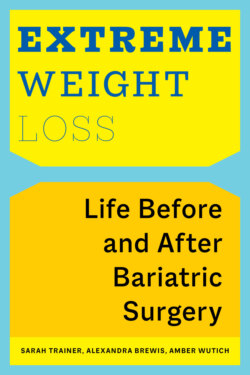Читать книгу Extreme Weight Loss - Amber Wutich - Страница 9
На сайте Литреса книга снята с продажи.
Organization of the Book
ОглавлениеThe anthropological ethnographic tradition once idealized the notion of a single researcher heroically collecting data (often while awkwardly appropriating “native” dress), analyzing it, and then going home to write it up in his study (and yes, it was usually “his”). The reality is that this research approach could never handle all the complex realities posed by on-the-ground, in-depth research. The ideal still retains great power, but we have found working as a collaborative unit on this project allowed us to comprehensively approach many methodological, theoretical, and practical challenges. Writing about our research as a collaborative unit has been more difficult. For one thing, first-person narration dominates much of the current compelling ethnographic writing. Most of the ethnographies written recently, for example, are framed firmly in the first person with careful attention to what the writer did, said, and saw—and how their own experienced self influenced what they did, said, and saw. This avoids the problematic third-person omnipotent narrator perspective, but it puts multiple authors, who necessarily were in different places at different times performing different tasks, in a bit of a bind.
After a great deal of internal debate and some external consultation, we decided to rely mostly on the use of “we” and “our” in the introduction and conclusion, which give more of an overview and a theoretical framing for the chapters that form the rest of the book. When necessary, we refer to ourselves in the third person by name. In the remaining chapters, the content- and participant-driven chapters that give primacy of place to participant-patient narratives and experiences, we again write mostly from a “we” perspective, but we more frequently refer to ourselves in the third person (again by name) because there are more instances within the fieldwork in which only one or two of us were present at any given time. Sarah, for example, conducted the interviews that form the core of the ethnographic research described in these chapters. Alex shouldered the task of managing the potentially fragile relations with hospital administrators. Amber devoted substantial time and effort to working out the methodological ramifications of different aspects of what was an extremely complex ethnographic project in an ethically sensitive context. We thus attempt to capture all of these individual experiences within our three-person team via a thoughtful, patchwork use of first-person-plural and third-person-plural perspective. In this book, no one wrote sections for which they themselves were not present. The shifting voice, however, hopefully highlights the fact that our points of view are just that. We do not and cannot know all that occurred in any given situation.
In Steering the Craft: A 21st-Century Guide to Sailing the Sea of Story, Ursula K. Le Guin writes about first-person narration, saying, “In nonfiction narrative of any kind . . . the I . . . is the author. In these forms, we normally expect the author/narrator to be reliable: to try honestly to tell us what they think happened. . . . The memoirists and nonfiction writers I respect are fully aware of the impossibility of being perfectly factual.”22 We strive to be reliable, even as we wrestle with our limitations, and to give due respect and attention to those ideas and experiences that our participants most wanted communicated to a broader audience.
In our writing, we also decided to organize the book around four key themes that emerged over and over again in our analyses: (1) weight as pathology, (2) weight as judgment, (3) weight loss as success, and (4) weight, worry, and perpetual surveillance. These themes are discussed in a semilinear fashion that roughly tracks the before, during, and after phases of the patients’ surgical journeys. Each chapter explores a different way in which the “burden” of weight is experienced in individual lives, acting as a prism for broader social processes. These are themes we see as important not just for anthropological discussions but also for clinicians and the general public.
In chapter 1, “Weight as Pathology,” we focus on the ways in which weight becomes a problem for people because it is framed as a medical issue. By this, we mean that obesity in medical terms is considered a disease and public health concern. In chapter 2, “Weight as Judgment,” we discuss how and why weight is a problem based on the fact that it has become a signpost and signal of a lack of individual moral worth and social standing. In contrast, in chapter 3, “Weight Loss as Success,” we show how lack of weight and/or weight loss signals worth and greater social integration. Finally, in chapter 4, “Weight, Worry, and Surveillance,” we focus on the ways in which weight maintenance, “healthy lifestyles,” and constant monitoring of eating and exercise are commonly perceived as signs of a strong personal work ethic, good moral fiber, and dedicated willpower. We also show how the high levels of worry and stress associated with constant tracking and monitoring are normalized or ignored.
